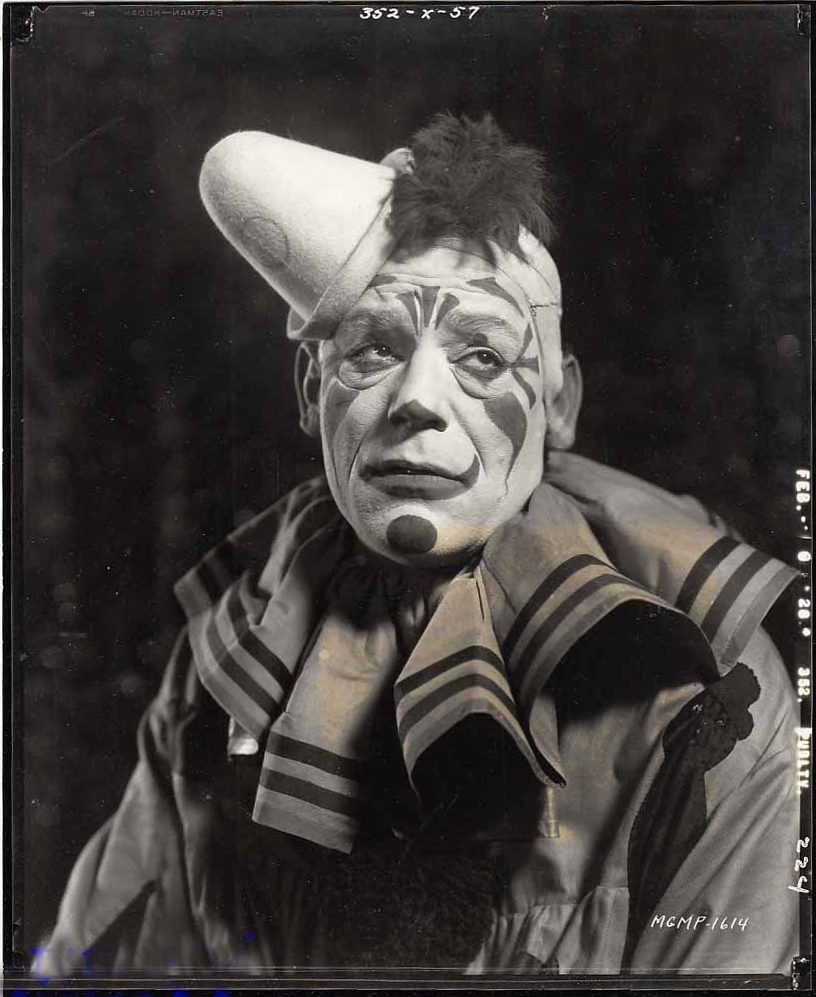A Flaming Sword in the Sky
Here’s another one of those short promo videos for the current show. You can find more of them on the Bone and Sickle YouTube channel if you’re interested.
Here’s another one of those short promo videos for the current show. You can find more of them on the Bone and Sickle YouTube channel if you’re interested.

Podcast: Play in new window | Download (Duration: 44:39 — 51.1MB)
Subscribe: Apple Podcasts | Spotify | Android | Podchaser | RSS | More
The Great Plague of London of 1665 to 1666 is vividly portrayed in Daniel Defoe’s A Journal of the Plague Year, which we’ll be examining closely in this episode. As the text is quite entertaining (much more so than his better known Robison Crusoe) we’ll be hearing more extensive quotes from the material than usual, delivered as usual by our diligent reader Mrs. Karswell.
We begin with a look at the presumed connection between the nursery rhyme, “Ring Around the Rosie” and the Black Death. Though the facts here may not satisfy our desire for macabre secrets hidden in plain sight, we will find evidence for something similar in a children’s song we review at the show’s conclusion. We hear a snippet of the song as rendered in the game Dead Space.
Defoe’s book occupies a strange place between history and historical fiction. As Defoe was 5 years old in 1655 and the book was published in 1722, the story is technically a work of fiction. However, the narrative is an excellent window into contemporary perceptions of the tragedy as well as treasure house of factual information. Characters within the story are nearly all actual individuals. Particular events described have widely been corroborated in contemporaneous accounts. Particular dates and locations are also meticulously anchored in reality – so much so, that scholars have frequently treated it as a contemporaneous source. Hints given in the text suggest that Defoe was in fact telling the story of his uncle, Henry Foe, who lived through the Great Plague in London and shared a profession (saddler) with the story’s narrator.
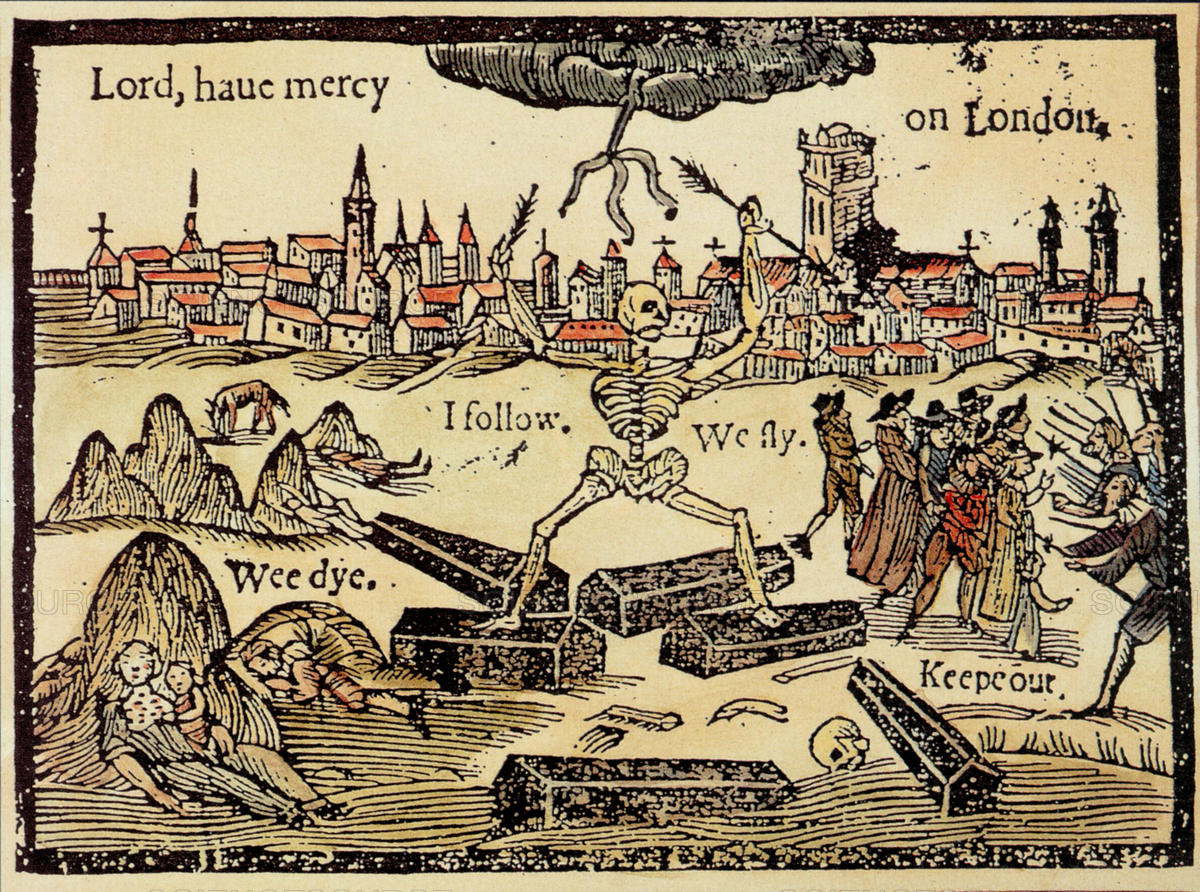
Part of what makes the book so fascinating is Defoe’s meticulous cataloging of the way in which Londoners reacted to (and anticipated) the plague in terms of omens and astrological predictions and biblical prophecies articulated in pamphlets, broadsheets, and almanacs of the day. Here, the sighting of two comets over England as well as the biblical and numeric significance of the approaching year 1666 play a large role. He also describes predictions of doom were also shared by visionaries and eccentric personalities on the city’s streets, such as those shared by the Quaker Solomon Eccles, known to Londoners as “Solomon Eagle,” a self-styled prophet who roamed the city with a pot of burning coals atop his head.

Defoe’s narrative also relishes some detail on the symptoms of the disease, the madness it brought upon those suffering from these symptoms, and the dreadful treatments offered by contemporary doctors. We hear a number of passages describing these aspects, including horrific accounts of patient suicides and a lethal kiss offered by an insane victim of the sickness.
Also included in A Journal are extensive quotes from municipal edicts stipulating how the emergency was to be addressed. From these descriptions we learn of the “Searchers of the Dead,” old women who roamed the city with red wands, prodding at corpses to determine which had succumbed to the disease, and of the watchmen posted at the doors of quarantined homes to ensure that those within (sick and healthy residents alike) remained incarcerated until the afflicted either recovered or was carted to the plague pits. We also hear how these measures were defeated by more devious citizens.
Corpses, which were placed outside homes (or later those that simply fell dead in the streets), were picked up by “dead carts” preceded by a bell ringer. Pickups and burial in the plague pits were only performed at night to avoid further distressing the citizenry. He hear a particularly dramatic description of the narrator’s visit to one of these pits and an encounter with a grieving loved one there and his rough treatment by cynical drunkards in a tavern to which he retreats.
Unfortunately for Londoner’s the Great Plague was followed by the Great Fire of London in 1666. While the death count from the plague had already begun to drop sometime before the fire, it was nonetheless commonly believed that this disaster somehow put an end to the epidemic or even, in some way, purified the city of its sickness. We hear a clip of the song “London’s Burning,” commonly associated with the 1666 fire despite its mentioning anachronistic “engines” sent to extinguish the flames.
Defoe’s Journal also includes another story related to a song. It’s his retelling of a legend circulating in London at the time inspired by a story from Vienna. It relates how a piper, a tavern entertainer, becomes grievously intoxicated and while passed out, is picked up by one of the dead carts and is deposited, while still unconscious, in a plague pit — thankfully awakening before earth is shoveled in. The story was eventually turned into the Viennese song “Oh du lieber Augustin,” (Oh, my dear Augustine) in the 1800s, and attributed to Markus Augustin, a minstrel and piper, who lived through the Great Plague of Vienna in 1679. While it’s set to the innocent-sounding melody of “Have You Ever Seen a Lassie,” the grim lyric tells how the piper has lost everything to the plague, like the city of Vienna itself. But its cheery tune and the fact that the singer has lived to tell his story has made it an anthem of survival for the city — and popular song throughout German-speaking lands. We hear a snippet of the song rendered in period-appropriate style by Ensemble Unisonos.
We end the show with a custom mashup of “Oh du lieber Augustin” and the curiously similar dead-cart scene from Monty Python and the Holy Grail.
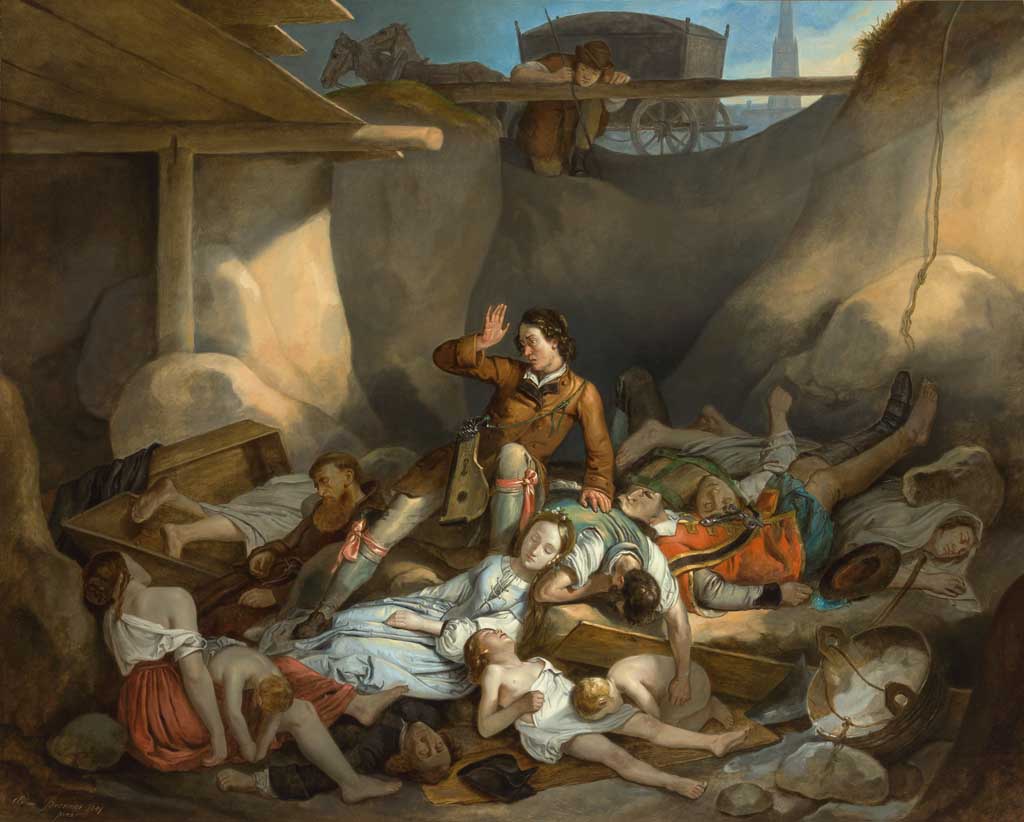
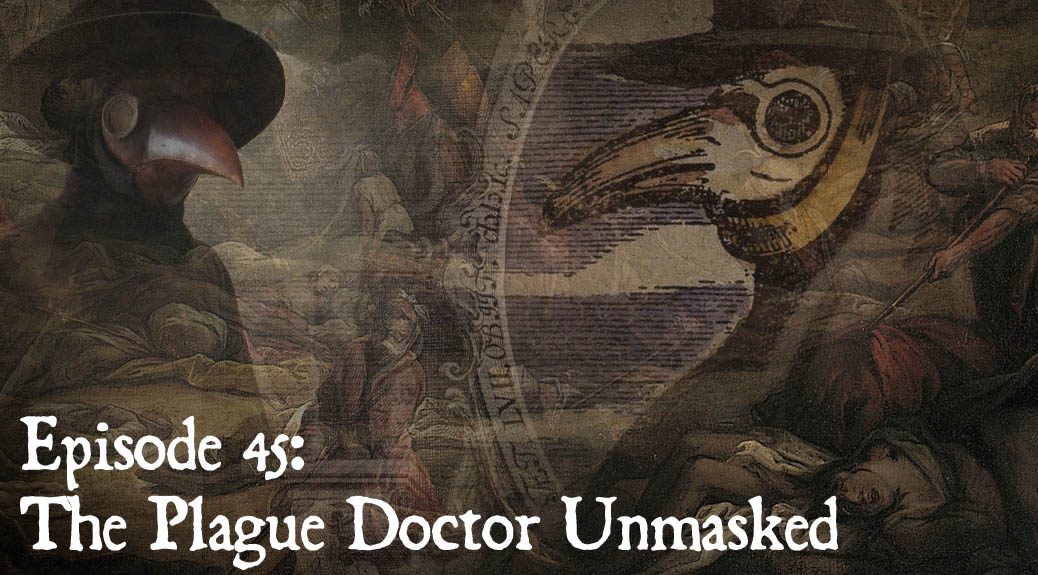
Podcast: Play in new window | Download (Duration: 46:50 — 53.6MB)
Subscribe: Apple Podcasts | Spotify | Android | Podchaser | RSS | More
The figure of the masked plague doctor is an object of intense fascination but also the subject of much misinformation. This episode sorts things out while seeking particular evidence for such handsomely dressed character in the historical record.
We begin with a few clips from horror films in which plague doctors figure, including the 2008 film The Sick House in which the spirit of a plague doctor menaces an archeologist, and the 2019 film The Cleansing in which a malevolent bird-masked “Cleanser” stalks through 14th-century Wales.
As most listeners are somewhat familiar with the plague mask and its presumed function, we get that out of the way first, noting the mask’s connection to the antique belief in miasma, or disease-carrying air as the cause of the plague and other ailments. We also clear up the misunderstanding that the plague doctor is a medieval character (since he only appears in the 17th century).
His first appearance is in a German broadsheet from 1655, in which the crow-like character identified as “Dr. Beak” and lampooned (along with doctors in general) for being greedy as carrion crows. As this image was copied and recopied for centuries, it raises the question as to whether the birdlike mask was in fact drawn from life or created strictly in the service of this original broadsheet’s metaphor.
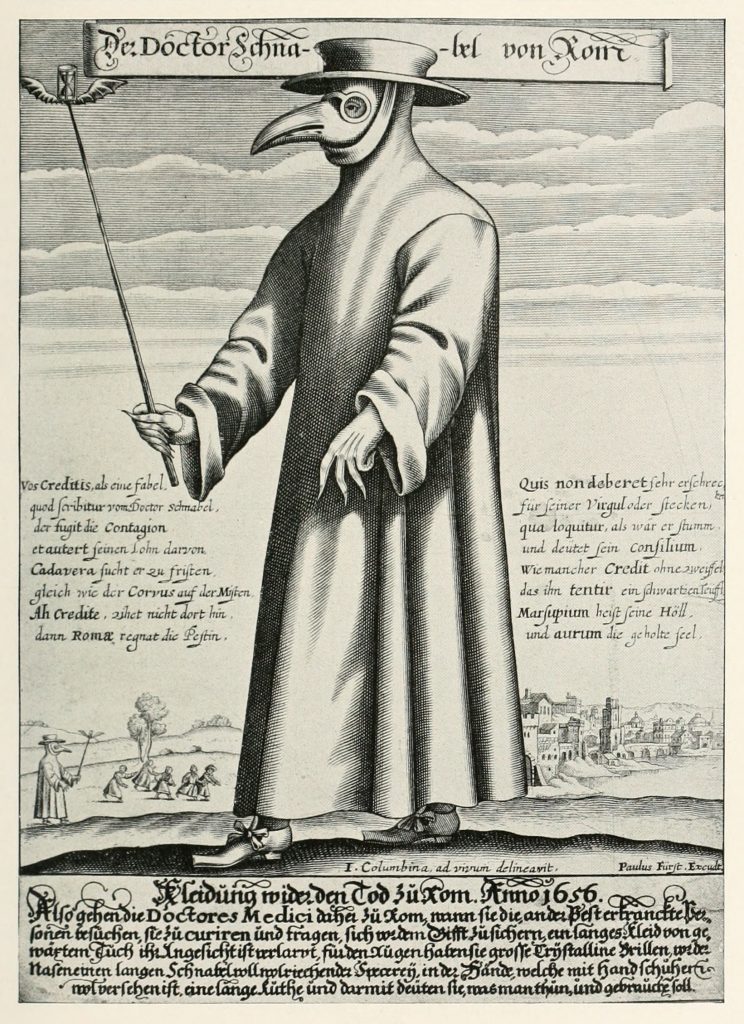
Next we look at other evidence for the character in the form of actual artifacts, including two masks exhibited in museums in Berlin and Ingolstadt, Germany.

As there are reasons to doubt the authenticity of these, we next look at evidence of plague masks associated with the island of Poveglia in the Venice Lagoon. Along the way, we learn a bit more about early measures the city took against the plague (including the invention of the concept of shipping quarantines along with coinage of the word).
We also review a bit of general information about the islands in the Venetian lagoon (including others besides Poveglia) used for the clinical isolation of victims of plague, leprosy, and the mental illness. A photo taken on Poveglia in 1899 is discussed as it may show an actual plague mask in use in the late 19th century. We also hear some snippets from the TV Show Ghost Adventures, which popularized a number of legends associated with Poveglia, including tales of asylum torture and suicide.
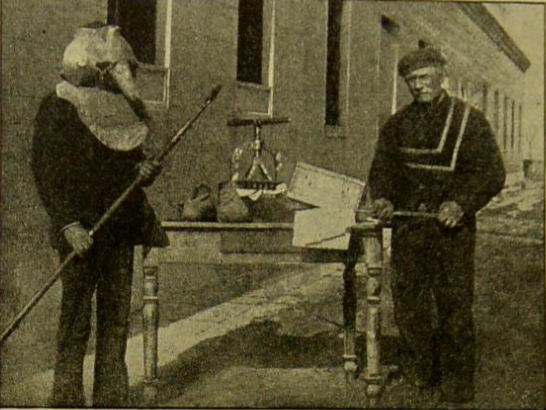
Next, we look at the first textual evidence for this plague mask and suit, in a 1682 volume attributing its invention to Charles de Lorme, royal physician to Louis XIV and the Medici Family, among others.
While the design of the mask seems to be a first with de Lorme, we also hear of some other uses of protective plague garments are documented in France and Italy around this time.
A surprising example from Basel, Switzerland provides rare evidence of particular doctor known to have worn a plague suit and mask. It’s 17th century painting of the family arms of the Zwinger family of Basel, painted for the doctor and theologian Theodor Zwinger the Younger, and depicting him in a plague mask and suit.
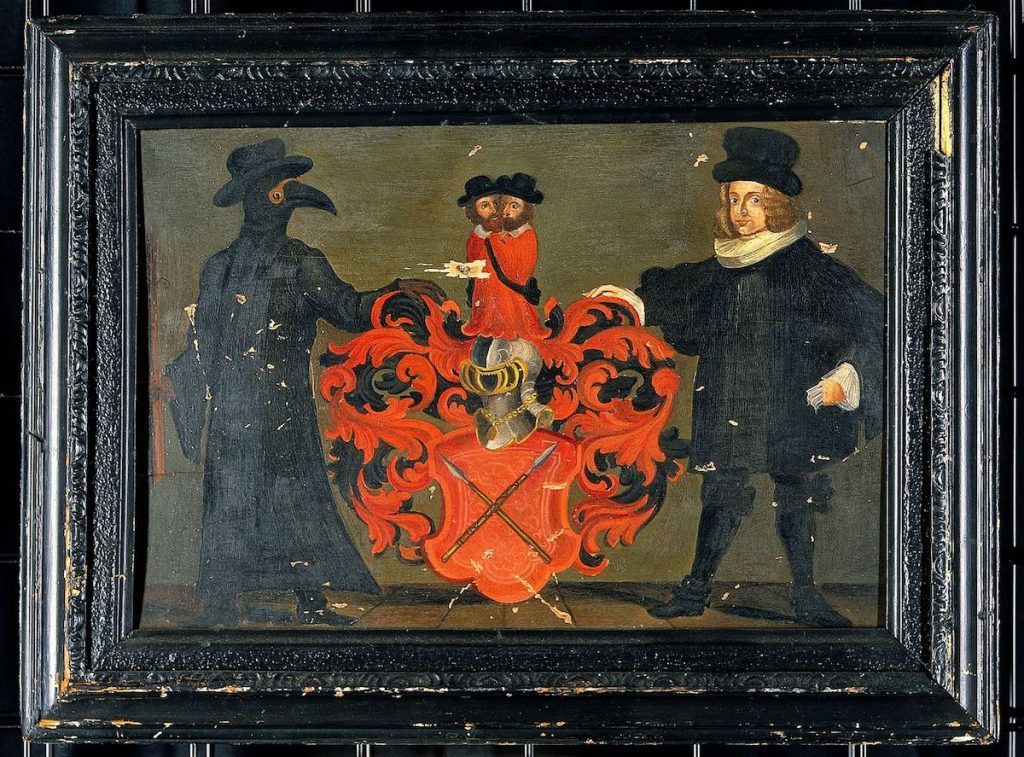
We also have a look at the symbolic use of special historic plague garments, special colors worn in France and Italy for medics working with plague victims, and the symbolic and practical function of the stick or baton held by the the plague doctor in most every historical illustration.
The Great Plague of Marseille (1721 to 1722) provides us one more name of a doctor known to have worn a plague suit and mask. His name was François Chicoyneau, and his efforts were not well received by the citizens he was assigned to serve in Marseille, as we hear.
Along the way, Mrs. Karswell provides us some contemporary accounts documenting other aspects of the Marseilles plague, the last bubonic pandemic of Europe, including novel means of disposing of plague corpses considered by the town council, a curiously relevant form of social distancing, and the basis of the legend of “Four Thieves Vinegar.”
Finally, we discuss those plague doctor masks worn in the Venetian Carnival, learning that they are a strictly modern creation not associated with the 16th-18th century commedia della’arte tradition that gives us the other masks.
We end with a strange parallel between an opera about performers in the commedia della’arte and a 1928 film starring silent horror great Lon Chaney, Sr. Included is a bit of music used to promote the film in question, Laugh Clown, Laugh.”
